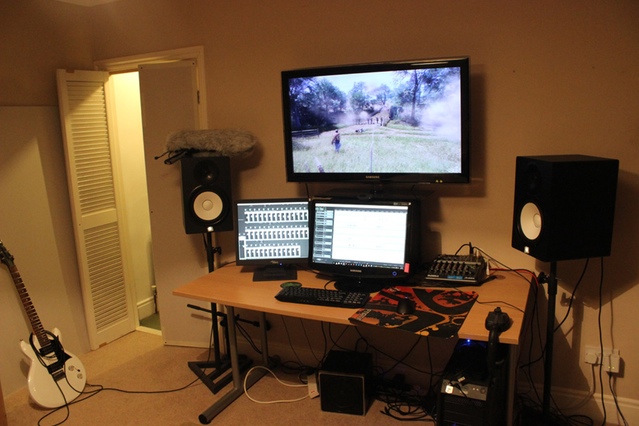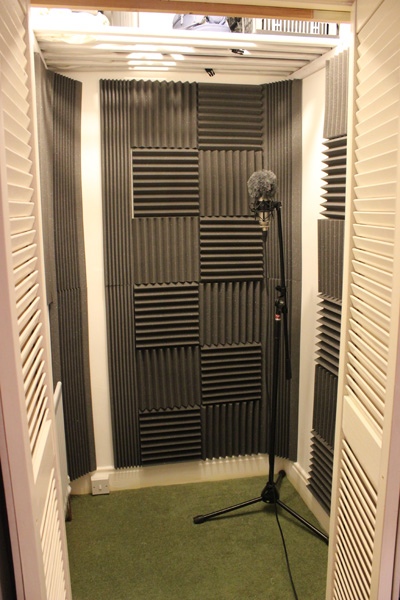Kickstarter Update 14: The audio for War of Rights
10/11 - 2015
Hello and welcome to our fourteenth Kickstarter update!
The audio for War of Rights
Hello everyone! Allow me to introduce myself. My name is Tom Wright, and I am the Audio Lead for War of Rights.
I have over three years of professional experience in Game Audio and four titles shipped on Steam.
Before I dive right into this update, I want to take a moment to thank you to all for backing and spreading the word for this Kickstarter campaign!
Seeing this at over 78% funded with four days to go is very exciting and encouraging.
Audio is one of the key components used to bring video games to life. Without audio,
you no longer feel like you’re interacting with objects or people, and things feel far more artificial as a result.
My job on War or Rights is to produce all of the audio content, which involves field recording, sound effects design,
implementing the audio using Middleware (Wwise), producing the dialogue and mixing the final product.
IFor today's Kickstarter update I am going to talk about the different types of sounds that are needed in the development of this game.
We can break the current sound effects down into the following general categories, Ambience, Player, Physics, User Interface, Voice and Weapons.
Ambiences
These sounds are used to set the scene. A dark cave wouldn’t be complete without a low drone and echoing drip sounds to help sell the environment.
In War of Rights, we have a day/night cycle. This means that the time of day heavily determines the soundscape. During the day,
you will hear the sound of open fields with birds chirping infrequently. From evening until the night,
you will hear the sound of crickets gradually fade into the scene. Watch the video demonstration below:
As you just heard, ambiances aren't limited to environmental sounds, and in War of Rights you will be able to hear large amounts of firearms,
bugles and groups humans screaming out in the distance all around you. These sound sources contribute greatly to the ambient soundscape.
We do this so that the player feels like they’re fighting as part of this huge battle.

Players
In War of Rights, we want to use as few HUD elements as possible because we believe that less visual clutter results in a more immersive experience.
So without these elements, we must communicate information to the player in other ways.
A good example of this is breathing sounds, which use to communicate your character's stamina level.
No audible breathing will demonstrate a soldier full of energy whereas breathing heavily will demonstrate that the character is exhausted.
Physics
Physics (or material) sounds are triggered when certain objects collide with other objects or materials within the game’s engine.
A body falling to the ground, a minie ball colliding with a wooden fence,
or even a player's shoe connecting with the earth below him - you have to account for each and every possibility when creating Physics sounds.
For example, a minie ball colliding with a wooden fence will sound completely different to a Minie Ball colliding with a tree trunk.

User Interface
I can guarantee that almost every game you have ever played has Menu or User Interface sounds.
These are used purely there to provide feedback to the player.
A simple ‘click’ or ‘whoosh’ communicates instantly to the player that their input (gamepad/mouse) has been registered by the game.
This is very important and should not be overlooked in game development.
Voice Acting
We have had the pleasure of working with a few extremely talented voice actors.
Having watched our Kickstarter video, you will have noticed the very great number of shouts, yells,
screams and commands that give our characters life. You can hear some of the recordings below:
Weapons
Creating authentic sounding audio will always be one of the most important factors for War of Rights,
and the weapons are no exception. I use source recordings called Historical Firearms which was produced by BOOM Library as the basis for my weapon sounds.
Their library contains a huge selection of recordings of weapons very similar to what was used in the American Civil War.
Soldiers from the war say that one of the most memorable sounds was created by the minie ball.
A small metallic ball bearing that was the primary form of ammunition used by infantry rifles.
Ex-soldiers remember the balls screaming passed their heads as what only could be described as ‘angry bees’.
A large part of Sound Design is experimentation - using everyday objects to create all kinds of sounds that most people never thought possible.
After searching online for some minie ball recordings, and finding nothing clean enough to actually use, I decided to experiment with a sling shot.
I started out by firing metal ball bearings passed a stereo microphone (Rode NT4), and while the sound was interesting,
it wasn’t very ‘bzzz’-like. I tested a lot of different objects and catch (Exception) { } finally stumbled across a British one pence coin.
Something about the shape and size seemingly gave it just the right amount of spin which created a very accurate noise.
Here is a segment of the recording session:
If you’re interested in learning more about me and my work, or if you have any questions, please visit my website at www.tomwrightsound.com .